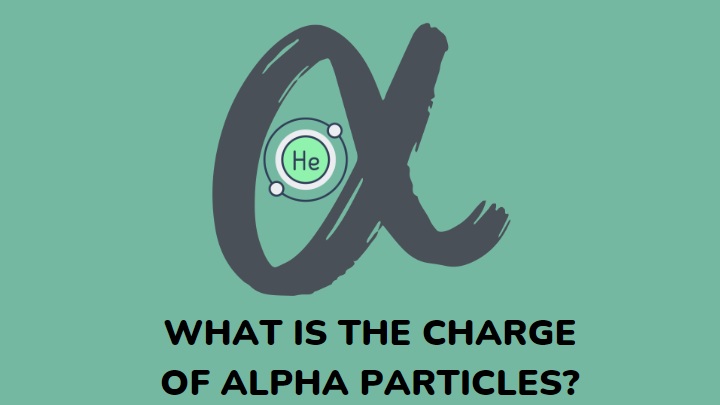Alpha particles are pretty much like helium atoms. They are products of radioactive reactions such as alpha decay. Alpha particles are written as 4He2+, which implies that it has a +2 charge.
You can call an alpha particle an isotope of helium ions or a doubly ionized helium nuclei. Just like every cation, it has lost two electrons which makes it a positively charged particle.
Furthermore, alpha particles were the first nuclear radiation to be discovered. Later on, other particles like beta, gamma, neutron, proton, and positron were discovered too.
The charge and components of the alpha particle are the focus of this article.
What is the charge of alpha particles?
Each alpha particle has an electrostatic charge of +2. This nuclear particle comprises only protons and neutrons. This is why it has an overall positive charge. It takes the semblance of a positive helium isotope.
What is the charge of an alpha particle in coulombs?
The charge of an alpha particle in coulombs is a product of its electrostatic charge and the charge of one proton.
That is,
q = 2 × 1.6×10−19C
q = 3.2 × 10−19C
What is the mass of an alpha particle?
The alpha particle has a mass of 6.642 ×10−27 kg (4 amu). One alpha particle is about 4 times the mass of a proton and neutron. It is also about 8,000 times the size of a beta particle. It is the heaviest nuclear particle in existence.
What is the charge-to-mass ratio of an alpha particle?
The charge-to-mass ratio of an alpha particle is gotten by getting a ratio of the charge of the particle and the resting mass.
e/m = 3.2 × 10−19C / 6.642 ×10−27 kg
e/m = 4.8178 × 107 C/kg
How many protons are in an alpha particle?
An alpha particle has two protons. These protons and neutrons make up the helium-like nucleus.
How many electrons are in an alpha particle?
Alpha particles do not have any electrons. An alpha particle is the nucleus of a helium atom, and the nucleus excludes the electron orbit.
How many neutrons are in an alpha particle?
An alpha particle has two neutrons in its nucleus. These neutrons are tightly bound to two protons in the helium-like nucleus.
FAQs
What is the charge-to-mass ratio of a proton compared to that of an alpha particle?
The charge-to-mass ratio of a proton is two times that of an alpha particle. Therefore, the charge-to-mass ratio of a proton to an alpha particle is 2:1.
How much is the mass of an alpha particle in comparison to the mass of an electron?
An alpha particle is about 7,300 times heavier than an electron. An alpha particle has a mass of 6.645×10−27 kg and an electron has a mass of 9.11×10−31 kg.
Are alpha particles the same as alpha rays?
Yes, they are. Alpha rays and alpha radiation are other names for alpha particles. They are nuclear emissions from very heavy radioactive materials such as uranium, polonium, and radium.
Conclusion
Alpha particles are positively charged helium isotopes with a +2 charge. They consist of two protons and two neutrons.
Alpha particles or alpha rays are emissions from the unstable nucleus of atoms to create a balance between the number of neutrons and protons.
In summary, an imbalance in the neutron-to-protons ratio creates an unstable nucleus which can only be restored by the emission of alpha particles.
You can learn about how to find the net charge of an element in simple steps.
Thanks for reading.
